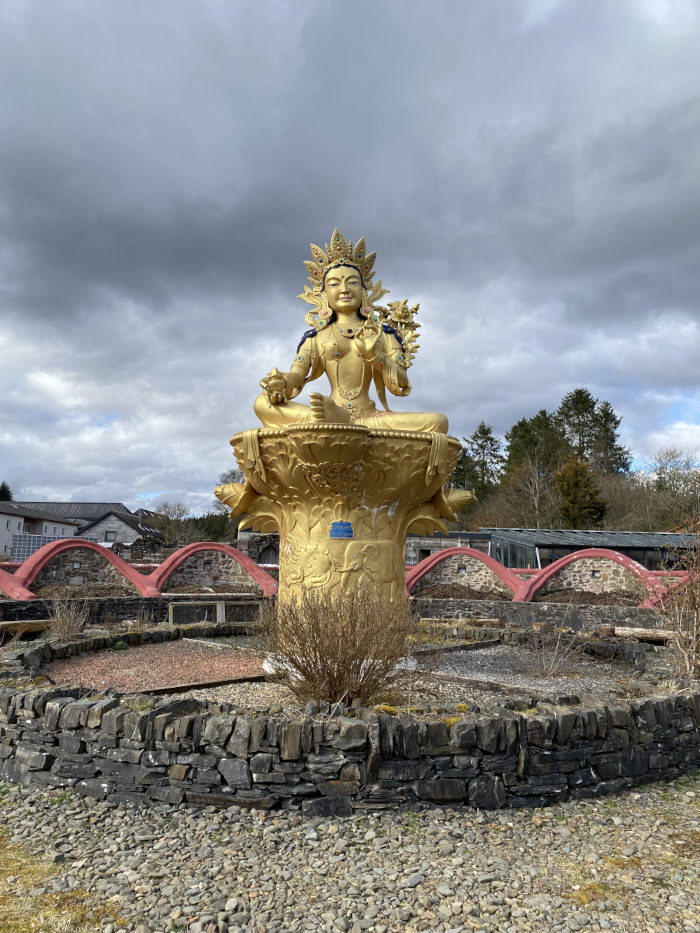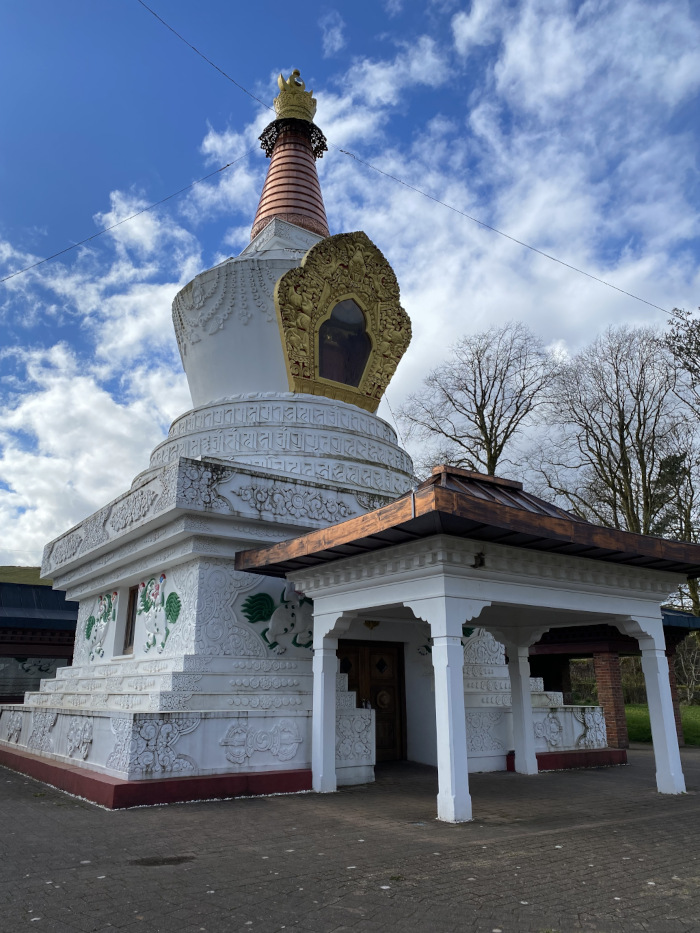
Cult leader Anthony Paul Moo-Young feeds woman after she kisses his feet.
Corrupted Dharma
Sinister cults exploiting eastern Dharma to entrap and brainwash White westerners into sexual exploitation, servitude and worship, among those featured are: apocalyptic Brahma Kumaris, Communist holy war of Shambhala, Amma, Shugden demon king of Kelsang Gyatso, race-mixing hareem of Mooji and death reveller Shoko Asahar.
- Introduction
- Shambhala
- Dalai Lama XIV
- Alyce Zeoli (as Jetsunma Ahkon Lhamo)
- Samye Ling Centre, Scotland
- Kagyu Ling Centre, France
- New Kadampa Tradition
- Church of Shambala
- Brahma Kumaris
- Anthony Moo-Young (Mooji)
- Sudhamani Idamannel (Amma)
- Conclusion
Introduction
Shambhala
Shambhala was a Buddhist prophecy that had emerged in the Early Middle Ages. When Muslims had advanced into Afghanistan and Northern India, they dislodged the Buddhists from these areas, and they had to find a haven somewhere. So, they came up with a spiritual resistance prophecy that was identified with a land, a utopian land, a kind of Buddhist paradise, where the members of this faith would be free to live and worship without been harassed by the “barbarians” whom Sanskrit sources called “Mecca people” or, in other words, the people of Mecca. The legend claimed that somewhere in the North there was a mysterious country, a land of plenty where people lived 900 years, where they were rich and had houses where roofs were clad in gold, and where nobody suffered, and of course, where the Buddhist religion existed in its pure form and so forth.
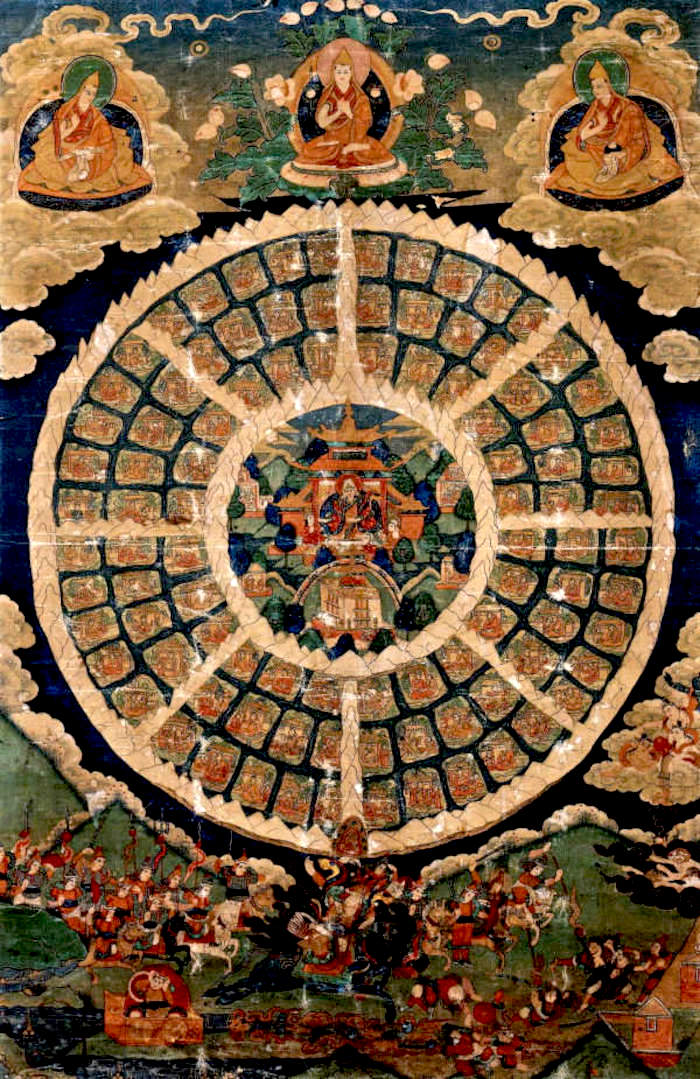
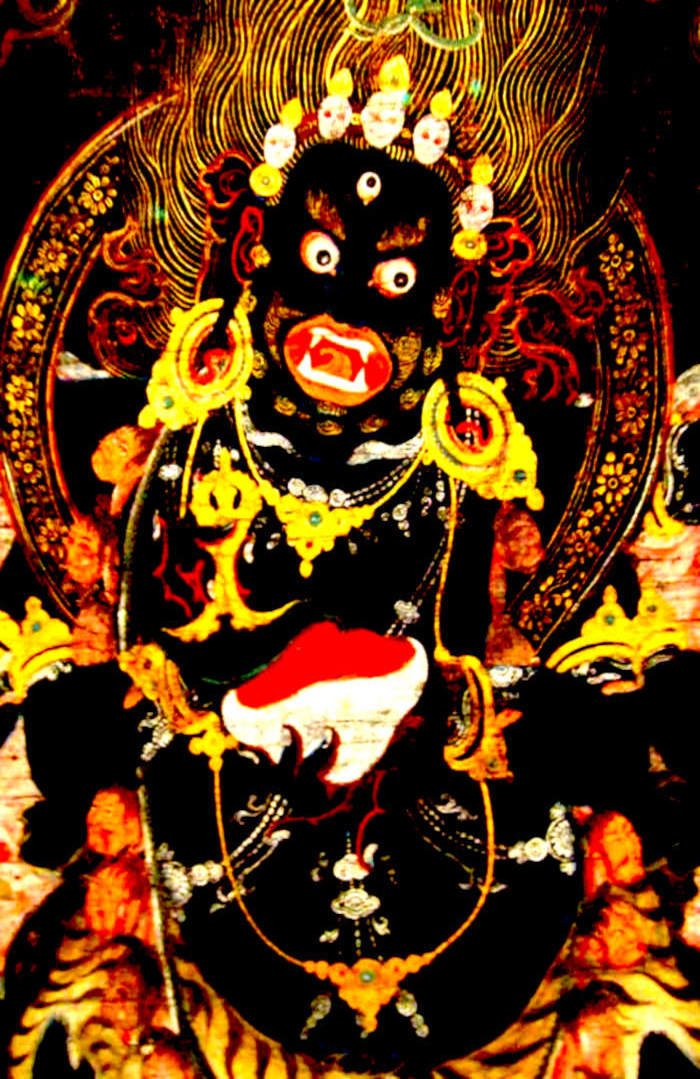
In original Buddhism, there was no concept of Paradise. This concept emerged as a result of encounters with the Muslim world. The prophecy also claimed that when the true faith (read Buddhism) would be in danger, the king of Shambhala named Rudra Chakrin would come in the year 2424 with a gigantic army and crush the enemies of the faith. So, it is a concept of a holy war, pure and simple. Many people are not aware that such a concept existed in Tibetan Buddhism. Shambhala was also understood as an internal war against one’s inner demons. It was an aspiration for spiritual perfection. Over time, the former, the holy war part, became obscured as the latter one became more relevant.
Agvan Lobsan Dorzhiev
Agvan Lobsan Dorzhiev, also Agvan Dorjiev or Dorjieff and Agvaandorj was a Russian-born monk of the Gelug school of Tibetan Buddhism, sometimes referred by his scholarly title as Tsenyi Khempo. To the Tibetans, he was popularly known as the Sokpo Tsеnshab Ngawang Lobsang.
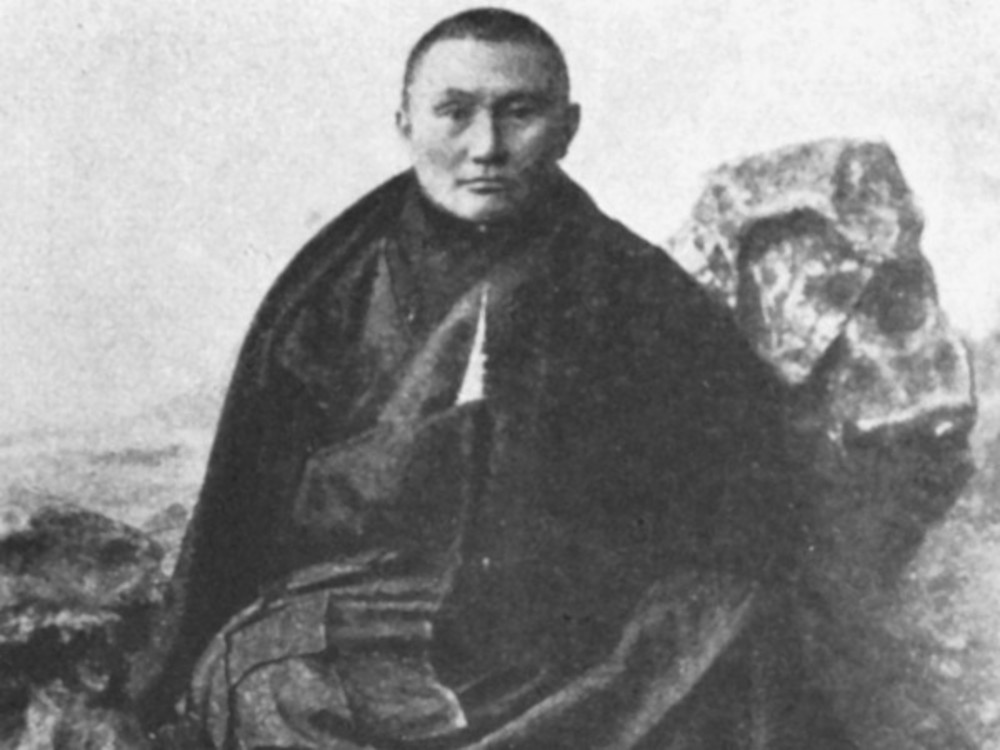
In 1896, the Tsar, Nikolai II, gave Agvan Dorzhiev a monogrammed watch for the services he had rendered to Badmayev's Russian agents in Lhasa. In early 1898 Dorzhiev went to Saint Petersburg “to collect subscriptions for his monastic college” and became friendly with Prince Esper Ukhtomsky, Gentleman of the Bedchamber to the Tsar and orientalist. Dorzhiev was presented to the Tsar. Dorzhiev then went on to Paris and possibly London before returning to Lhasa.
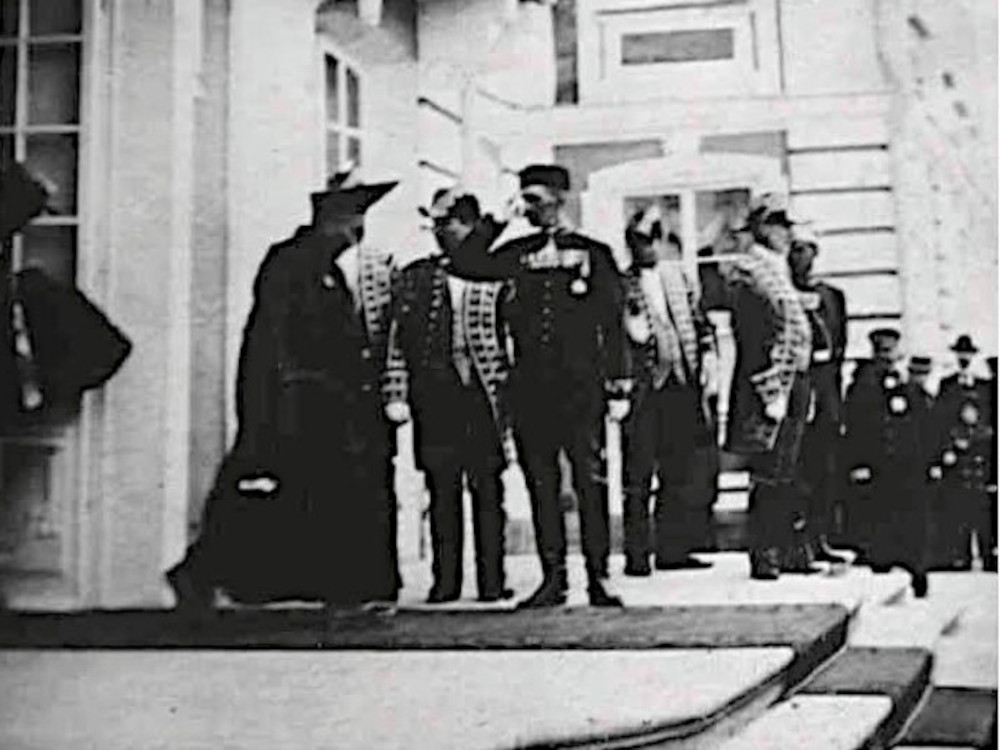
“Dorjiev tried to convince the Thirteenth Dalai Lama that his best source of protection would be Russia, so he told the former Dalai Lama — I mean the present one is the Fourteenth, this was the Thirteenth — he told him that actually, Russia was Shambhala and that Czar Nicholas II was the reincarnation of Tsongkhapa, who was the great Tibetan Buddhist master, and that the Romanov dynasty were the descendants of the rulers of Shambhala. And although the Thirteenth Dalai Lama had great hopes that Russia would protect them, the Czar never actually agreed. Nevertheless, as a result of all of Dorjiev’s efforts, there was a temple built in St. Petersburg”.
By 1903, both Lord Curzon, the Viceroy of India, and Francis Younghusband became wrongly convinced that Russia and Tibet had signed secret treaties threatening the security of British interests in India, and they suspected that Dorzhiev was working for the Russian government. Compounded by the closed nature of Tibet at the time, the fear of Russia drawing Tibet into the Great Game to control the routes across Asia was a reason for the British invasion of Tibet during 1903-4.
Since the days of Catherine the Great (1729–1796), the Romanov rulers had been considered by Russian lamaists as the incarnation of White Tara, a female bodhisattva typically associated with Buddhist tantric practice and considered an emanation of Chenresig (the bodhisattva who embodies the compassion of all Buddhas), and the protectress of the Tibetan people. 1913 saw the great celebrations for the 300th anniversary of the House of Romanov. Dorzhiev made speeches thanking the Tsar for his essential support for the Buddhist community in Saint Petersburg. A lama named Ulyanov published a book that same year attempting to prove that the Romanovs were directly descended from Sucandra, a legendary king of Shambhala.
Alexander Barchenko
Alexander Barchenko was an occult writer from St. Petersburg and his Bolshevik secret police patron and the chief Bolshevik cryptographer Gleb Bokii who was one of the spearheads of the Communist Revolution in 1917. Bokii had decided, at some point, to use Tibetan Buddhism and its spiritual techniques to change the minds of the people, in other words, to help engineer the new communist human being. During the 1920s and the 1930s, was a period of troubles and dramatic changes for the Tibetan-Mongol world. The Manchu Empire in China collapsed in 1911 following by the fall of the Russian Empire in 1917.
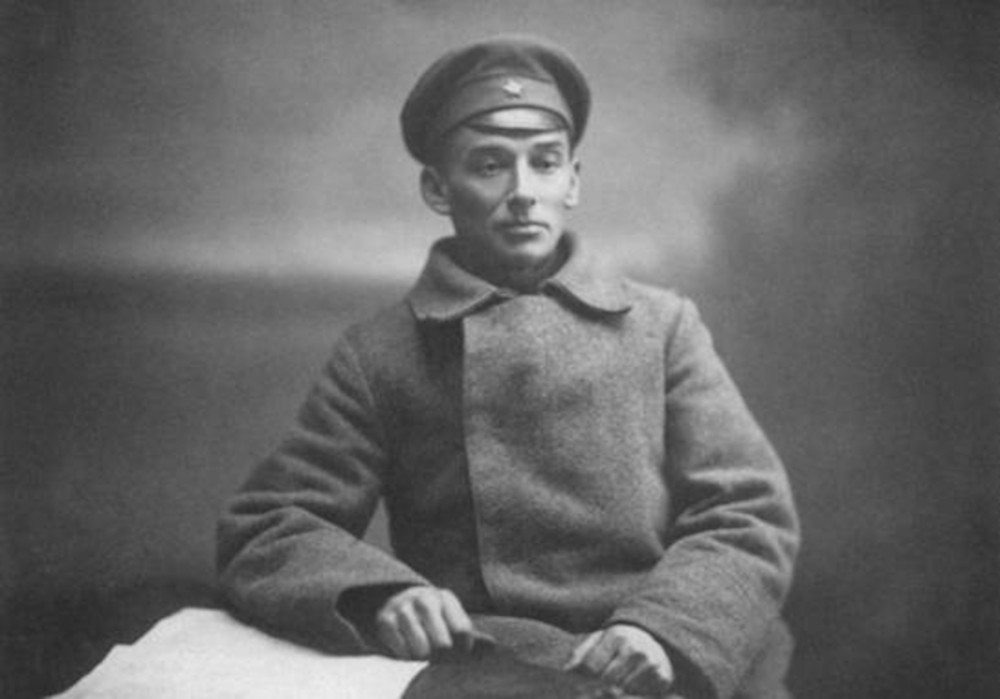
The entire political landscape of Eurasia became filled with ethnic, religious, and class conflicts. That was when Shambhala and various sister prophecies resurfaced in Inner Asia as apocalyptic legends that helped local populations to deal with reality. Communist International (Comintern) was an organisation created in 1919 to promote the world-wide revolution, established a Mongol-Tibetan Section to draw the local nomads, peasants, and junior lama monks to Communism. In Mongolia, Bolshevik fellow-travellers explained to the populace that Communism was a fulfilment of legendary Shambhala.
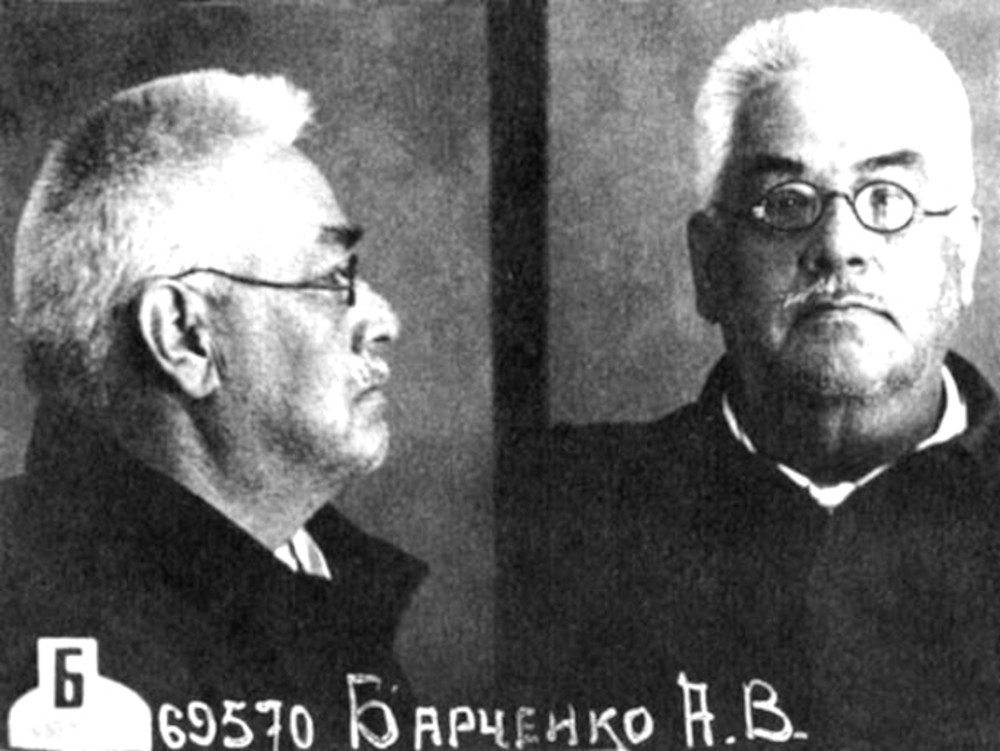
Barchenko and some other Bolshevik intellectuals were upset that the Russian Revolution did not change human nature. One of the chapters of the book carries a peculiar title, “The Engineer of the Human Soul”. Another two major characters are a Russian American painter, Nicholas Roerich and his wife Helena. They were also interested in Shambhala. They wanted to go to Tibet and retrieve Tibetan wisdom. This ambitious couple nourished a megalomaniac idea to build in the heart of Asia a Tibetan Buddhist utopia (they called it the Sacred Union of the East) that would throw light to the rest of the humankind. At one point, in 1926, they tried to flirt with Communism because Helena and Nicholas Roerich believed that since the Shambhala legend said salvation would come from the North, they wanted to use Red Russia in their grand scheme. Roerich went to Tibet, posing as reincarnated Dalai Lama and pretended to dislodge the existing 13th Dalai Lama. Red Russia refused to wholeheartedly support such a reckless project, and the couple were said to have become then on disillusioned with the Bolsheviks. When they parted with the Bolsheviks, the Roeriches began courting American sponsors. Among them, we find a rich currency speculator Louis Horch and future FDR’s vice president Henry Wallace, who later sponsored the Roerich’s second expedition to Asia.
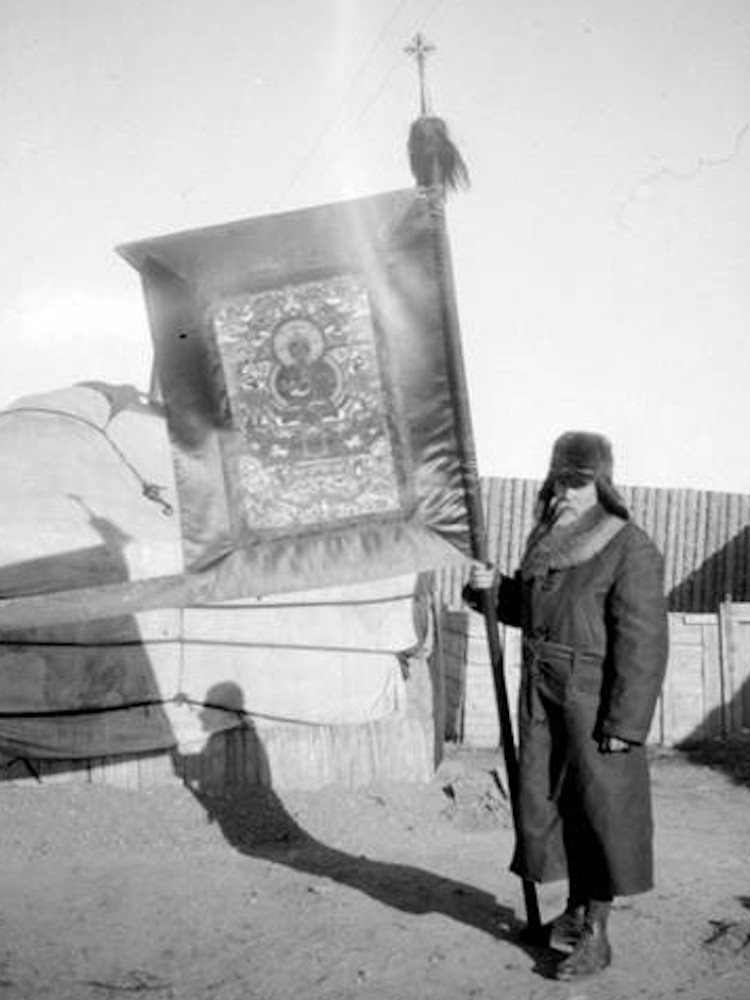
“Nicholas Roerich, the Russian painter and occultist, who toyed with the same idea of merging Tibetan Buddhism with Communism. Driven by his otherworldly Master, he posed as a reincarnation of the Dalai Lama and flirted with the Bolsheviks in an attempt to unleash the Shambhala war in Tibet”.
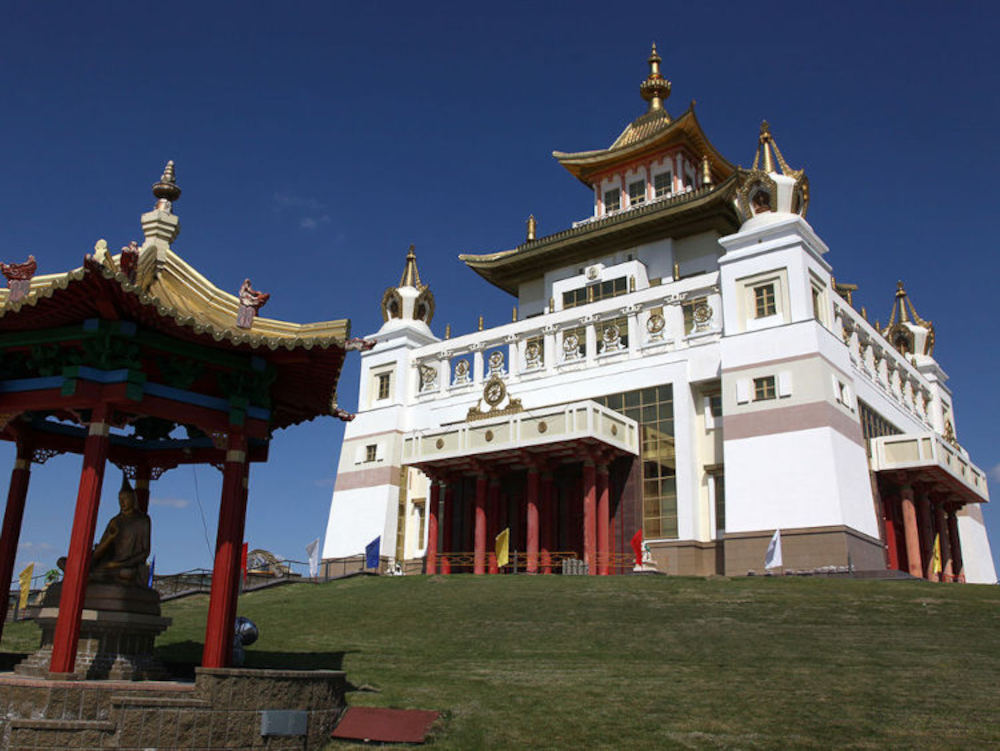
In July 1919, Bolshevik leader Vladimir Lenin issued an appeal to the Kalmyk people, calling for them to revolt and to aid the Red Army. Lenin promised to provide the Kalmyks, among other things, a sufficient quantity of land for their use. The promise came to fruition on November 4, 1920, when a resolution was passed by the All-Russian Central Executive Committee proclaiming the formation of the Kalmyk Autonomous Oblast. Fifteen years later, on October 22, 1935, the Oblast was elevated to republic status, Kalmyk Autonomous Soviet Socialist Republic.
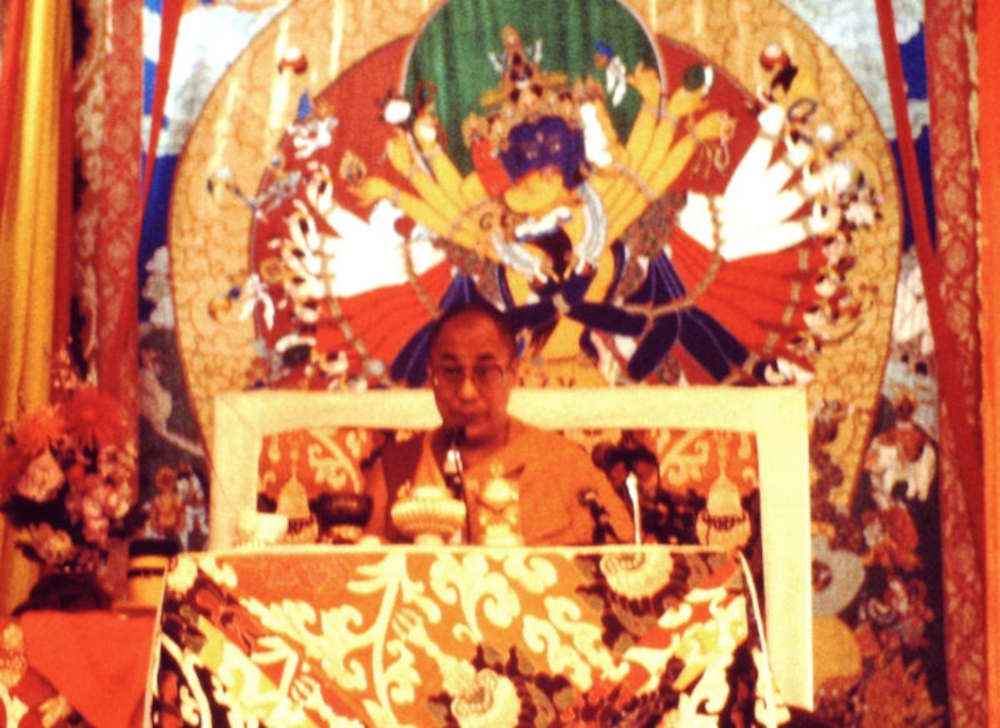
“Inside their cult groups, these Tibetan Lamaists still call their latest whistle-blowers, the few western dharma brats (second generation, Tibetan Buddhists) who woke up to be ‘” spreading poison”; “heretics”; and ”Samaya breakers”; who are headed to Rudra Hell. They must be shunned and attacked, so no one will hear what they are saying, and then ruthlessly gossiped about in their ‘compassionate’ sanghas; called out by the Lamas and their inner circles, by name, as “apostates who will ruin the other members’ own ‘enlightenment.’” Not worthy to be in the Enlightened Circle and doomed to Vajra Hell.”.
Dalai Lama XIV
The Dalai Lama XIV disclosed in an interview to the BBC that he had such good relations with Chairman Mao Zedong that he regarded him as “a father”. Recalling his close relationship with Mao in a BBC interview, the Tibetan religious leader recounted how, at formal dinners, the Chinese leader would make him sit by his side and personally serve him in the best Chinese tradition.
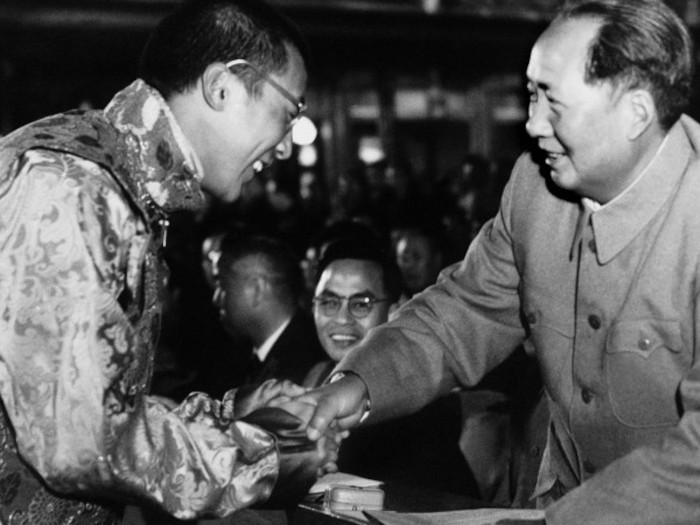
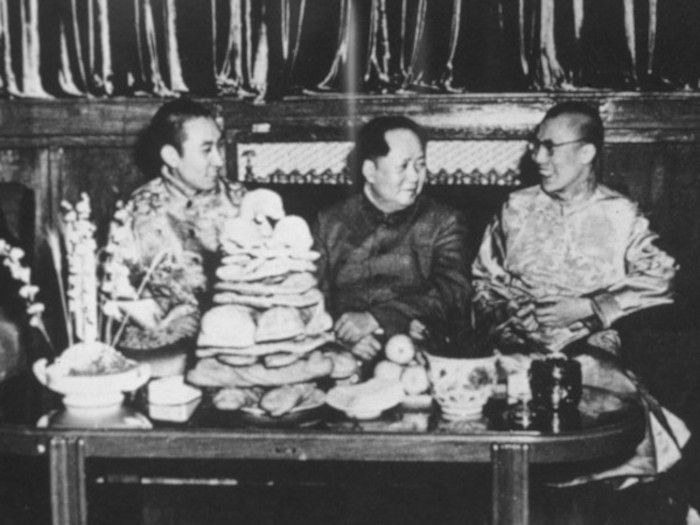
“He [Chairman Mao] appears to me as a father, and he himself considered me as a son. [We had] very good relations. The only problem was that on many occasions, when official dinners were held, Chairman Mao always used to bring me to his side. So, then as Chinese tradition, Chairman Mao himself would use his chopsticks to put some food in my plate. So, in a way it was a great honour, but in a way I feel little fear...he coughing too much, a chain smoker, so I might get some germs [laughing]”.
In the interview, the Dalai Lama acknowledged with a laugh when asked by the interviewer, Andrew Marr, whether as a young man he was “attracted by some aspects of Communism”. He then approvingly cited Marxist economic theory which, he believed, offered a solution to the current economic crisis in the West.
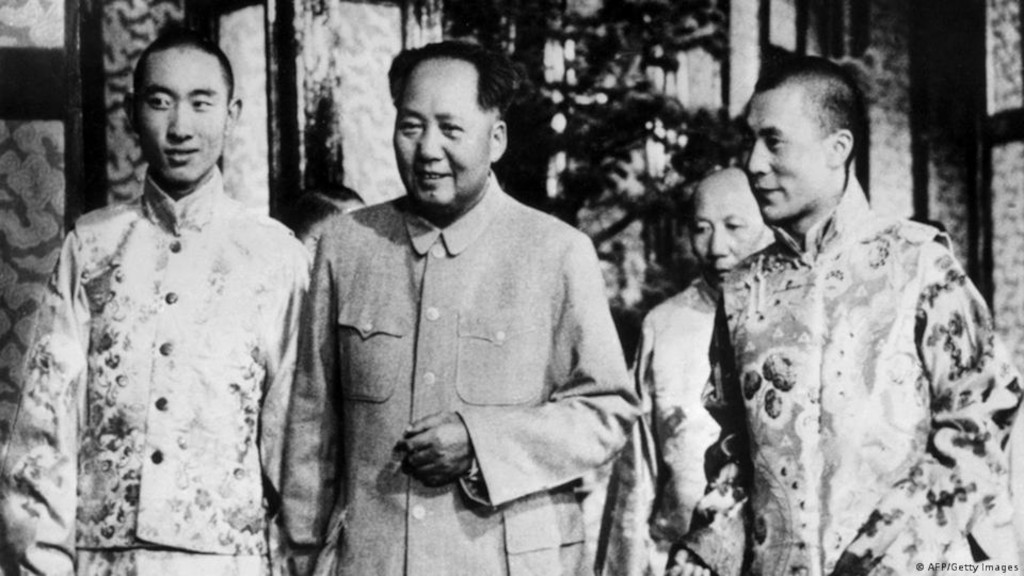
“When I was in China, I learnt Marxist economy theory, which has an emphasis on equal distribution, rather than just profit. Since we human beings created this [economic] problem, we also have ability to overcome it. In spite of our difficulties, we should not give up our hope…we must keep our self confidence, that is very important”.
In September 1954, the Dalai Lama XIV together with the 10th Panchen Lama went to the Chinese capital to meet Mao Zedong and attend the first session of the National People's Congress as a delegate, primarily discussing China's constitution. On 27 September 1954, the Dalai Lama was selected as a Vice chairman of the Standing Committee of the National People's Congress, a post he officially held until 1964. When Mao Zedong finally died in 1976, during a Kalachakra ritual, the 14th Dalai Lama staged a rite connected to the Kalachakra Tantra.
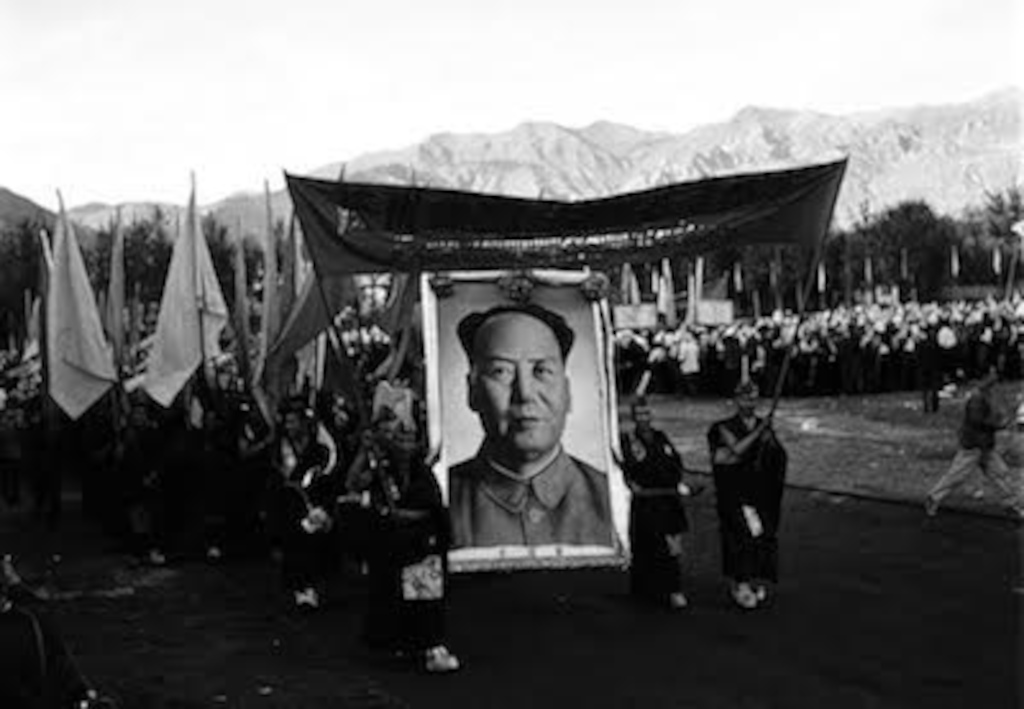
The Dalai Lama XIV held an offical government position during Mao Zedongs disasterous Great Leap Forward and only disembarked when confronted in the midst of his own demised during the China's Cultural Revolution. Could the Dalai Lama XIV be charged and put on trial for mass genocide? …Guanyin soil?
Alyce Zeoli - Jetsunma Ahkon Lhamo
Alyce Zeoli, an Italian-Jewish woman originally from Brooklyn who went from leading a New Age prayer group in her basement to becoming Jetsunma Ahkon Lhamo, the highest-ranking woman in Tibetan Buddhism. Alyce Zeoli as an ordinary spiritual cult leader and psychic claimed to channel a prophet named Jeremiah and received alien voices belonging to “Andor, Head of the Intergalactic Council,” a demon named “Santu,” and even transconfigurating a strange, high-pitched “Miss Buddha” during séances located in her suburban basement every Thursday night.
“At various times, according to the books and articles on her, Zeoli claimed to clearly remember earlier incarnations in which she ruled an entire galaxy and also ruled an ancient civilization on earth”.
Jetsunma was recognised by Penor Rinpoche, second only to the Dalai Lama as Tibetan Buddhism’s supreme authority, as a reincarnation of a 17th-century saint, and he identified her as an emanation of Mandarava, the “peerless princess,” consort of Padmasambhava, the legendary founder of Buddhism in Tibet.
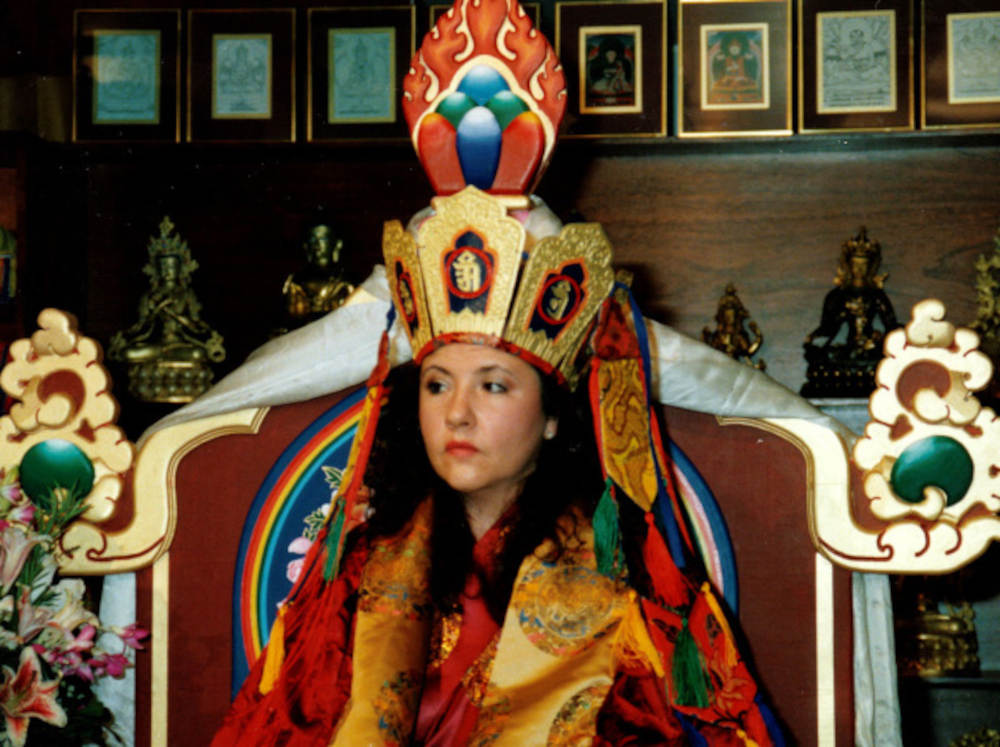
[Jetsunma] is a rather complicated, if not thoroughly secular, person, given to certain personal and temperamental indulgences (megalomania, lying, verbal abuse, to name a few). She is also physically violent; in one instance, she hits a disciple in the face. She also accepts a $100,000 yearly salary while her students go into debt to pay her. In the end, Sherrill has written a spiritual horror story.”.
Kunzang Odsal Palyul Changchub Choling is the largest Tibetan Buddhist Center in the United States, located in Poolesville, Md. Founded in 1986 by Alyce Zeoli, the community under her leadership attempted to blend classical Tibetan ideas with an almost “anything goes” attitude toward life and spirituality.

“There are unsettling rumors arising from Poolesville. From many sources connected with the Temple -- several insistent on anonymity for fear of reprisal -- come reports of beatings administered to monks and nuns by Jetsunma, of shady, even illegal financial dealings, of psychic abuse and manipulation eerily reminiscent of the early days of Jonestown. When it became known that Tenzin Chophak, a recently enthroned tulku and a translator for Penor Rinpoche, was talking openly to me about KPC, his electronic mailbox filled with anonymous hate messages and death threats, among them: “You better watch your back.” “Testicular cancer will befall you, and in a hurry, I hope.” “You will burn in Vajra hell for many kalpas for what you are doing”… I, too, was warned, by a former Temple member. 'She will fuck you royally,” he said. “She has these people who think she's God. They might come to burn your house down, put a bomb in your car. Or they'll put a hex on you, and you'll have bad dreams for ten years.”.
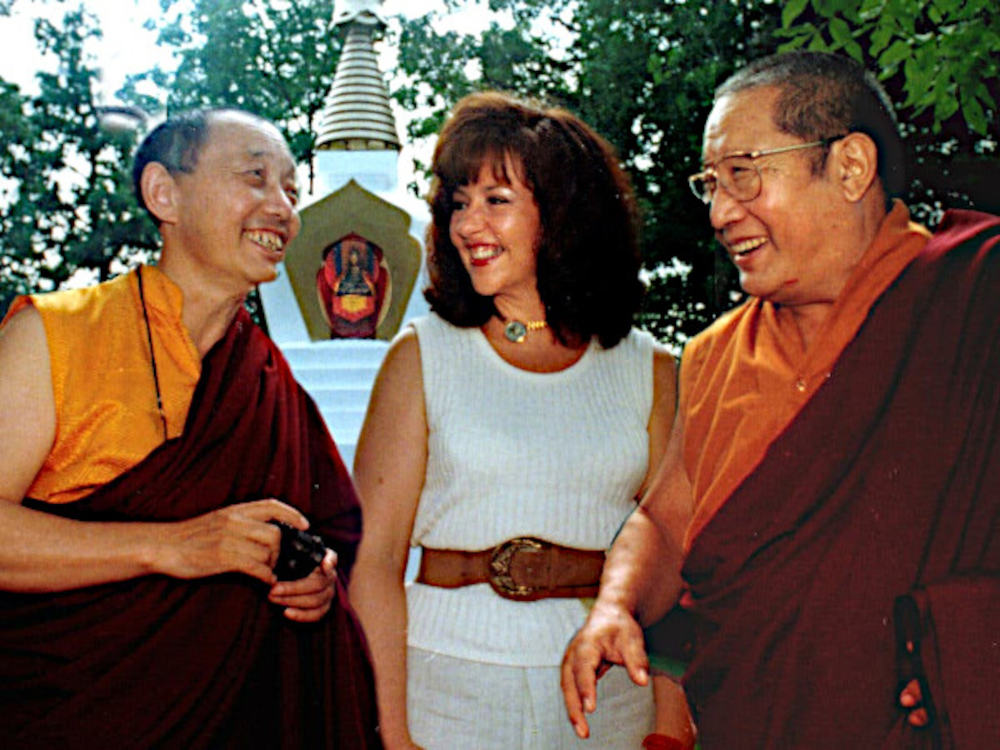
“The first time Rinpoche arrives at Poolesville, he is horrified to learn that bug zappers have been placed all over the rural property. For Buddhists, one of the five main ethical precepts is not to kill, and this includes all sentient life. Jetsunma tells Rinpoche that she has placed Tibetan prayer flags over the zappers; however, he is outraged, and during the night someone cuts the electric cords. Furthermore, Jetsunma also has the community show films of animals being slaughtered to foster compassionate attitudes toward life, yet is quoted as saying, “Red meat. I just can’t get enough.”
Alyce Zeoli claimant, H. H. Penor Rinpoche, later caused much head-shaking disbelief by also recognising actor Steven Seagal as a Tulku but had later confided to a journalist that he would not be recognising any more American tulkus — since Americans tend to have “a problem with pride.” shortly before he died, Penor Rinpoche wrote a roughly worded letter to Jetsunma demanding that she stop referring to herself as a realised person and stop teaching Buddhadharma in his name.)
Samye Ling Centre
Samye Ling was cofounded in 1967 by Dr. Akong Tulku Rinpoche and Chogyam Trungpa Rinpoche, Samye Ling was the first Tibetan Buddhist Centre to be established in the West and was named after Samye, the very first monastery to be established in Tibet. They were soon joined by artist Sherapalden Beru and the monk Samten. By 1970, Trungpa Rinpoche had departed for the USA and the 16th Karmapa firmly encouraged Akong Rinpoche to take a leadership role in developing Samye Ling.
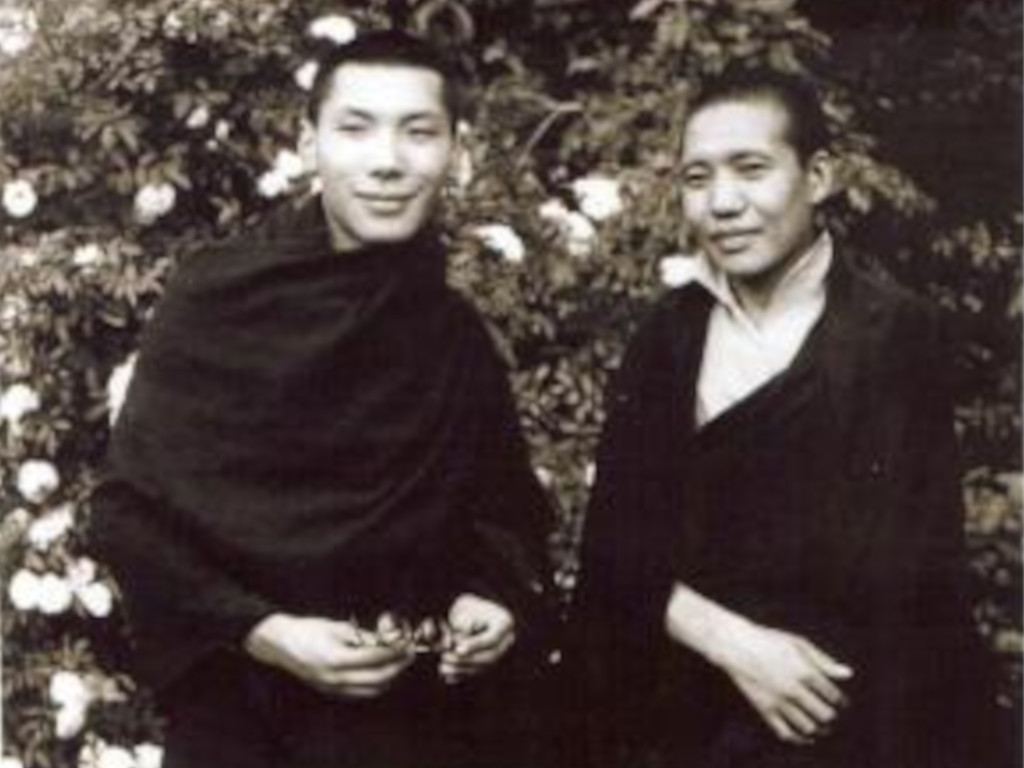
Akong Rinpoche accused Chogyam Trungpa Rinpoche of betraying his ‘Tibetan-ness’ after he was discovered at Samye Ling drinking and having sex on the grounds; acts that Trungpa was instructed to keep "private and hidden" by Akong. Trungpa's heavy drinking, womanising, and the physical assault of a student and his girlfriend, caused controversy during his lifetime and afterward.
The centre recieved two visits by the 16th Karmapa; On the second visit he was accompanied by Jamgon Kongtrul Rinpoche and a party of a dozen tulkus, lamas and monks. Together they performed the Vajra Crown ceremony and gave empowerments and teachings. The 16th Karmapa assured Akong Rinpoche about the longer-term future of Buddhism in the West and at Samye Ling. The Karmapa's visit also saw the establishment of our first international branches, in Belgium, Spain and Ireland.
“What seemed to be his playful joke in 1977 - as he ruffled Akong Rinpoche's frizzy hair and called him 'Africa Lama' - turned out also to be full of foresight as Rinpoche several years later became the Karma Kagyu representative for Africa as Kagyu dharma developed there.”
On 8 October 2013, it was reported that Akong Tulku Rinpoche had been killed in “a dispute over money” in Chengdu, China, along with two other monks, including Rinpoche's nephew, and his driver. The police said that three Tibetan men had been arrested and admitted carrying out the killings. The Samye-Ling website subsequently said that the killers had intended to rob Akong Rinpoche of funds which were being distributed to various projects supported by the charity, Rokpa International, for which he was responsible.
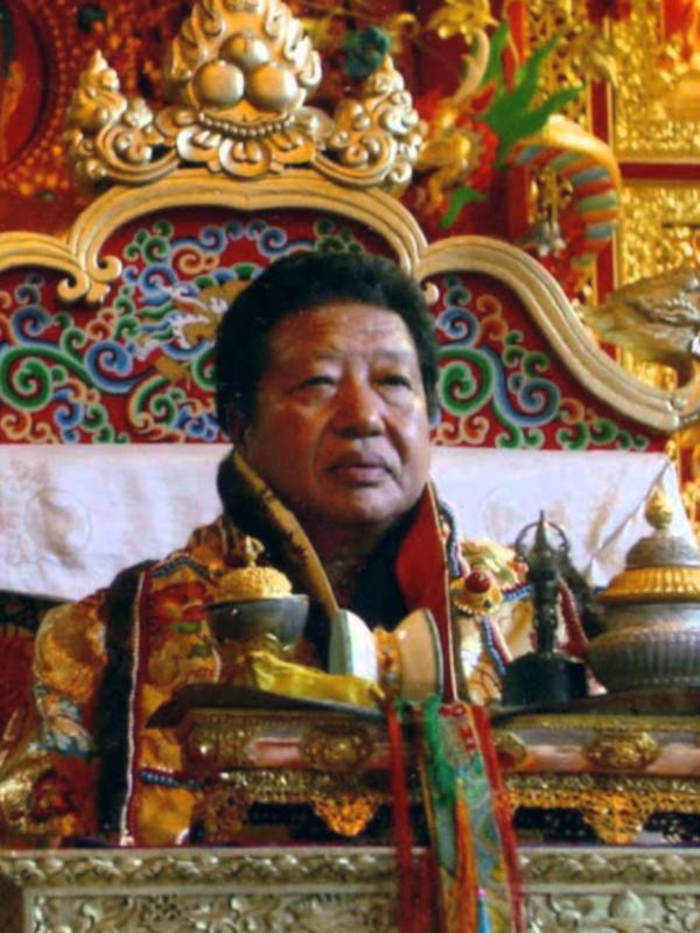
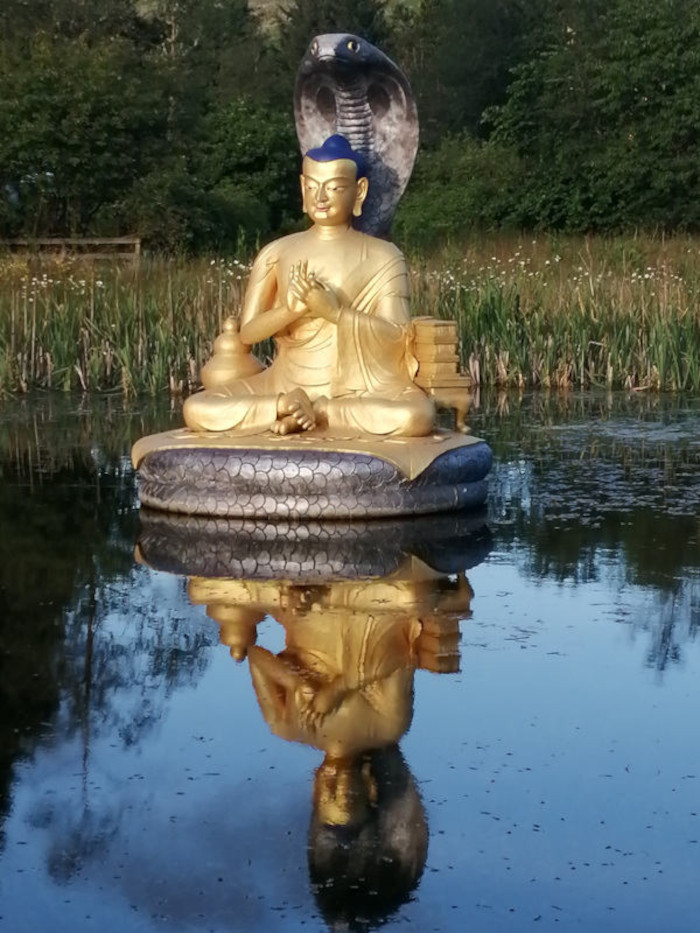
On 12 October 2013 Samye-Ling released a statement confirming that one of the suspected killers had been named by Chengdu police as Tudeng Gusha, also known as Thubten Kunsal, who had spent some five years in the UK and who had made religious statues at Samye Ling and an associated centre in London. The statue of Nagarjuna at Samye Ling was sculpted by Lama Thubten Kunsal from Tashi Gonsar Gong monastery in Derge, East Tibet. On 12 October 2013 the centre announced that Thubten Kunsal has been named by Chengdu police as one of three individuals suspected of the murders of Akong Rinpoche, co-founder of the centre, and two others in Chengdu, China, on 8 October 2013.
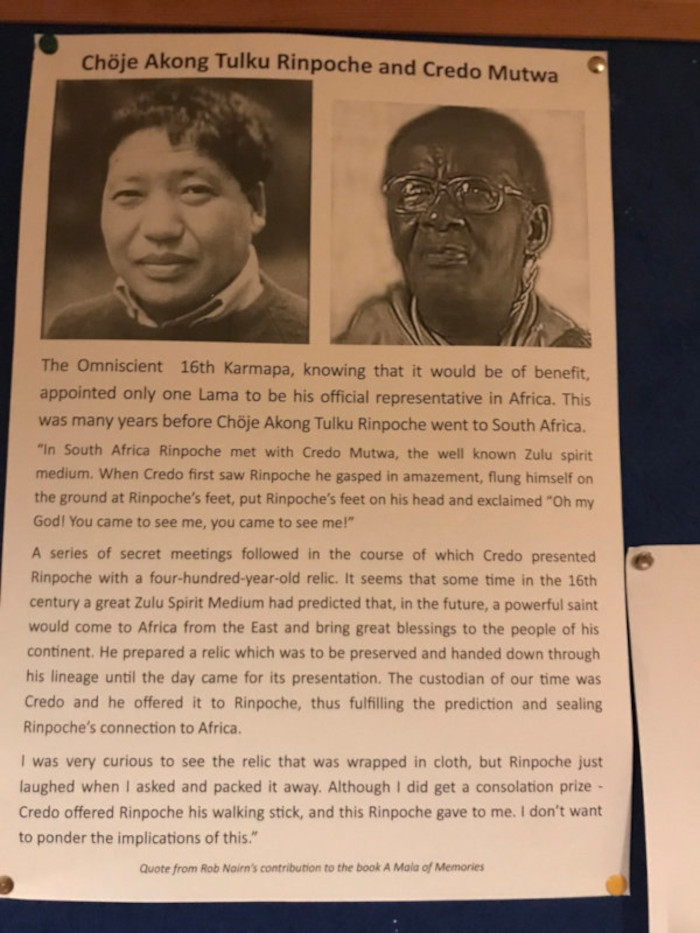
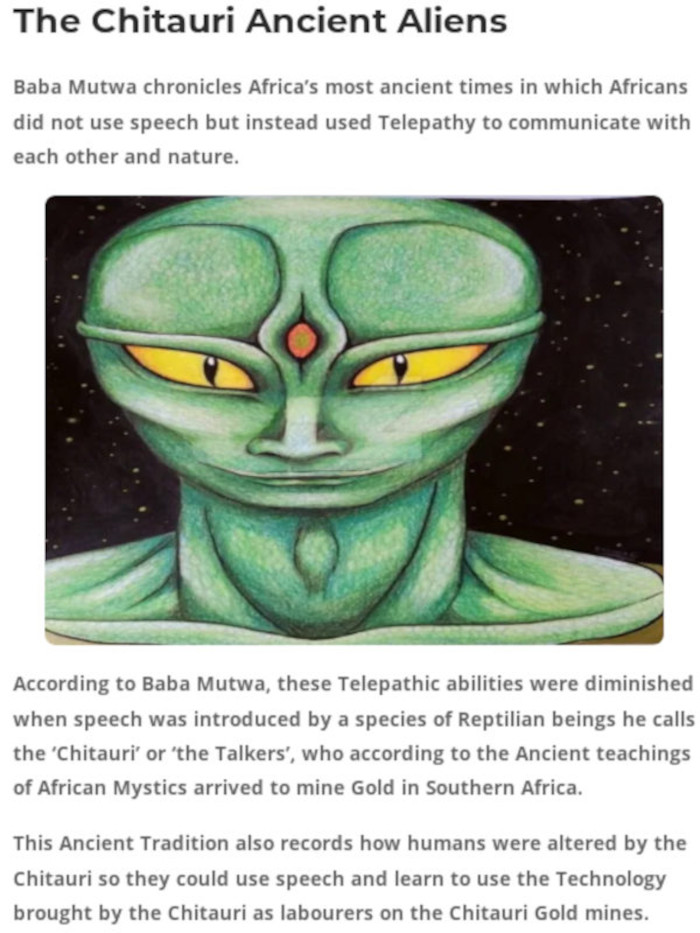
At the centre of Samye Ling Tibetan Buddhist Centre, the first Tibetan Buddhist Centre to have been established in the West, is a stained-glass, circular mural of mass murderer Mao Zedong, a photograph of this "good omen" is displayed at the centre of the website home page. Here he is revered as a Bodhisattva [one who seeks awakening, an individual on the path to becoming a Buddha]. He is encircled by a ring of fire, symbolising a storm omen of revolution, setting an aftermath of peace upon the western world.
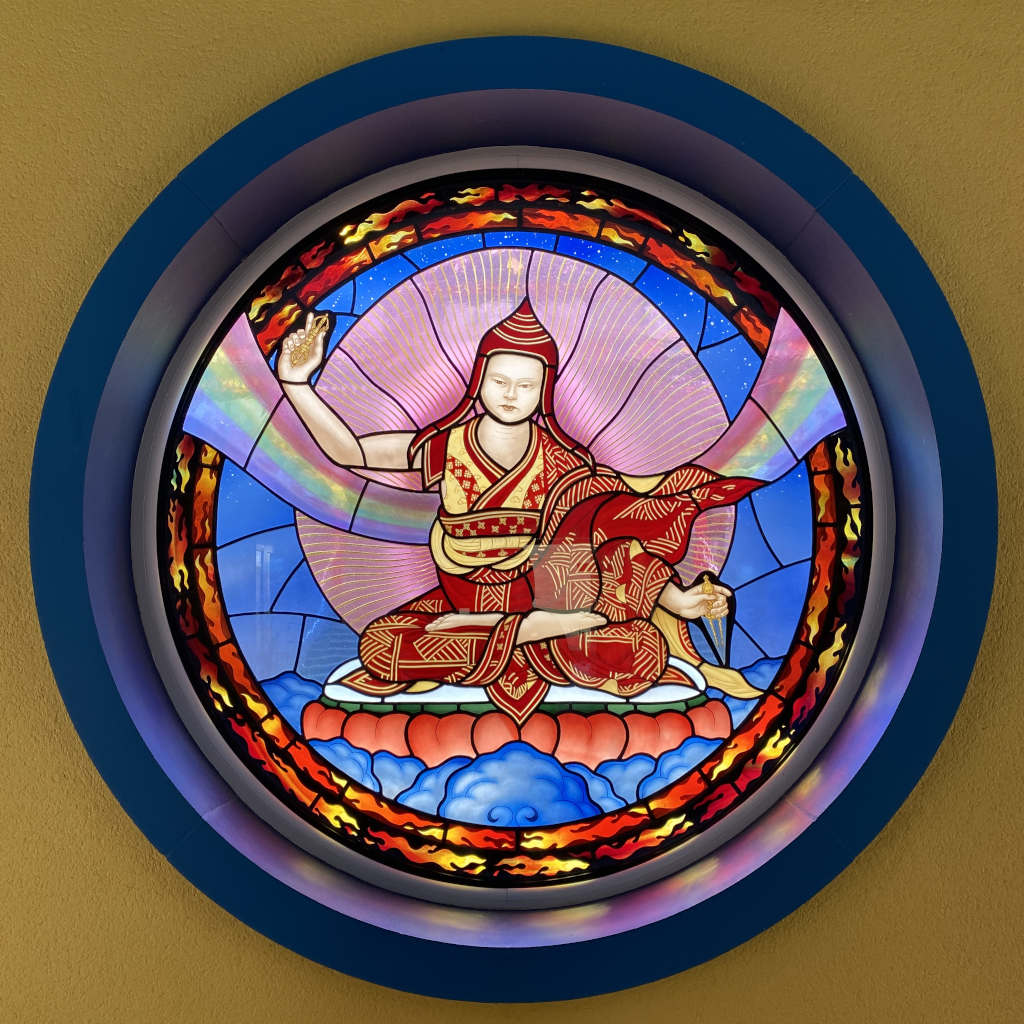
“On the second of the ceremony’s three days, Mao died. And the third day, it rained all morning. But, in the afternoon, there appeared one of the most beautiful rainbows I have ever seen. I was certain that it must be a good omen”.
In his raised right hand he is wielding a Dorjee and left hand a Vajra, a legendary and ritualistic weapon, symbolising the properties of a diamond (indestructibility) and a thunderbolt (irresistible force). Seated upon a lotus, high above the clouds (impunity), he associated with spiritual awakening, and faithfulness. The lotus is considered pure, emerging from murky waters perfectly clean; symbolising purity of speech, of body, and of the mind. Visible through a corridor from the main entrance, a turn of left or right, revealing the centre's temple.
Samye Ling began inside an occupied hunting lodge named Johnston House [Rokpa Trust charity office, bunk house / library for visitors]. Daramsala searched Europe for atmospheric conditions similiar to that of Tibet, thereafter locating a weather station elevated several miles beyond a small village named Eskdalemuir. Located off the west coast of Scotland Samye Ling also occupies Holy Isle, a Centre for World Peace and Health is located to the north of the island. The isle has ancient spiritual heritage dating back to the 6th century.
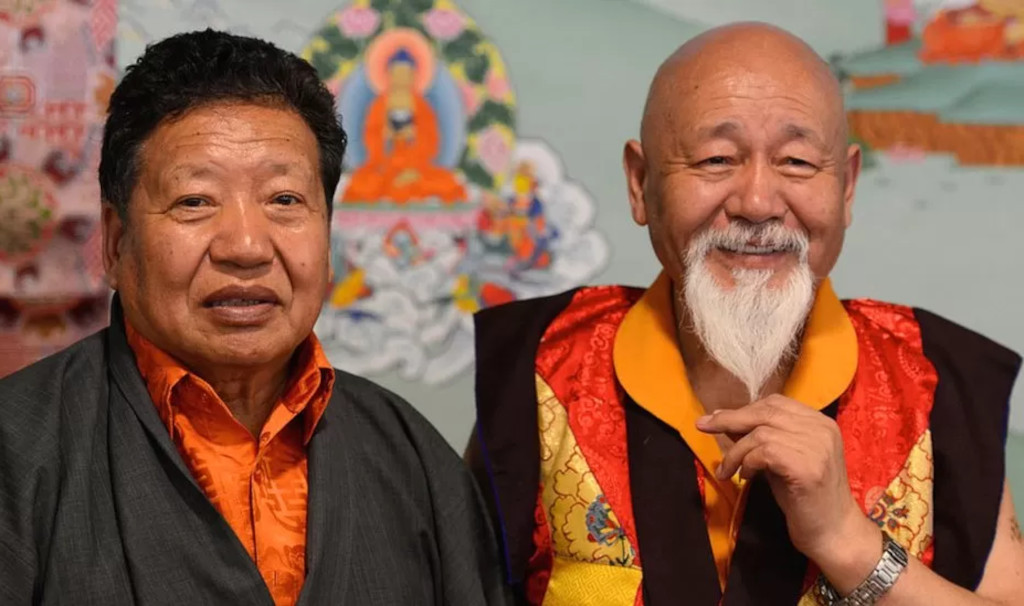
“As a young man, Lama Yeshe Losal Rinpoche was a "selfish waster" but his journey to Scotland has seen him take a different path. He was born in an "idyllic" village in Tibet but constantly rebelled against his family, experiencing wild times around the world for many years. His leisure activities in India included "gambling, movie-going and chatting up young women". Now he calls a quiet corner of southern Scotland his home, where he is the abbot of the Samye Ling Buddhist monastery near Eskdalemuir.”.
In September 2000 a police investigation into sex abuse announced a scandal involving an unnamed senior monk – later revealed as an Englishman known as Tsering Tashi, real name Timothy Mannox – accused by an 18 year old novice named Kevin Don, who had been a monk for a year of abusing him (said Mr Mannox asked him to stay the night, but after he fell asleep he woke up three times with Mr Mannox's hand on his genitals) whilst he was 16, as well as claims of assault against three men, further accusations claiming that seniority at the centre was turning a blind eye to drug use, sexual affairs, theft and deception.

“Kevin Don said that after leaving the monastery he took his accusations to the press because he did not want the same thing to happen to someone else.”.
Whistle blowing Kevin Stevenson further alleged that he saw residents smoke cannabis and take LSD, going on to claim that a monk stole several golden Buddha’s from the retreat shop and pawned them for heroin in Dumfries, and some monks behaving intimately with female visitors.’ Of more than a 100 residents there, probably only 20 are genuinely interested in Buddhism’ he added. Earlier in the year in June another monk, whilst a guest at the centre, Tenzin Chonjoe, had been convicted of assaulting a 14 year old girl. Drunk at the time and with an already drink problem, he was sentenced to three months imprisonment and placed on the sex offenders register.
“In June 2000, another Samye Ling monk was sentenced to three months in jail for molesting a teenage girl. Tenzin Chonjoe, 30, indecently assaulted the teenager in a bedsit after befriending her with tales of Kung Fu, meditation and fortune telling. The monk, who had an alcohol problem, had been a guest at Samye Ling when the attack happened in Carlisle. He was jailed for three months and placed on the Sex Offenders' Register after admitting indecent assault.”.
Mannox left Samye Ling shortly after the Daily Record investigation in April 2000. He is now living in England. As well as the abuse allegations against Mannox, the Record investigation had uncovered evidence of drug-taking, sexual affairs and benefit fraud among members of the 100-strong Buddhist community. The abuse claims became a backdrop to increasing tensions within the centre and the local community in Eskdalemuir. Leading monks were accused of creating a cult atmosphere and building extravagant shrines and palaces. Senior monks were also accused of enjoying lavish lifestyles, with expensive cars and first-class air travel. Their simple homes were even fitted with satellite television.
Osel Tendzin
In 1976 Chogyam Trungpa Rinpoche chose Osel Tendzin as his Vajra Regent, fully empowering him as a holder of the Kagyu lineage, the first Westerner to be appointed to such a position. Osel Tendzin (alias Thomas Rich) became the leader of America's largest Tibetan Buddhist group the Vajradhatu (Trungpa’s Shambhala cult renamed Vajradhatu) International Buddhist Church (no transparency with IRS). He fled into seclusion because many members of the “Church” demanded that he resign his position during a revelation concerning a bisexual man with whom he had homosexual relations had received a positive test for the AIDS virus. Later that year, in December, a high priest of Tibetan Buddhism told a group of American Buddhists that there was grave concern that Mr Tendzin 'might have passed this incurable disease on to many, many people.'.
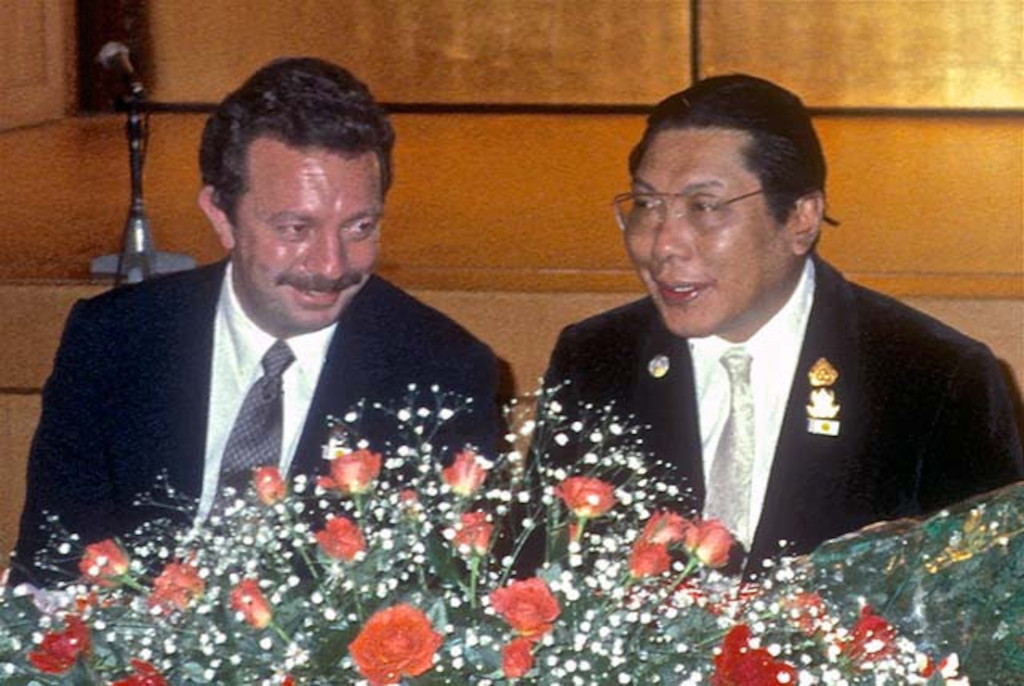
As revelations increased it was further revealed that Tendzin had slept with “Hundreds of Shambhala participants” (mostly young men) while he had the aids' virus. Three senior members of the Vajradhatu congregation, who asked not to be identified, said Mr Tendzin's companion, a man in his 20s, had also passed the virus along again when he had sex with a woman in the community; she had since tested positive for the AIDS virus. Members of the church board of directors were said to have done nothing about Mr Tendzin's behaviour for months, even after they learned that he was infected with the virus.
“Tenzin offered to explain his behaviour at a meeting which I attended. Like all of his talks, this was considered a teaching of dharma, and donations were solicited and expected. So, I paid him $35.00 to hear his explanation. In response to close questioning by students, he first swore us to secrecy (family secrets again), and then said that Trungpa had requested him to be tested for HIV in the early 1980s and told him to keep quiet about the positive result. Tendzin had asked Trungpa what he should do if students wanted to have sex with him, and Trungpa replied that as long as he did his Vajrayana purification practises, it did not matter because they would not get the disease. Tendzin's answer, in short, was that he had obeyed the guru.”.
Shambhala has always been under the umbrella of the Karma Kagyu sect, as many dozens of Lamaist sects (the Diamond way et al.) are. All are allied with Communist China and are a part participant in China’s soft power manipulations upon the West World. Not one of these Tibetan Lamas, of any sect, nor Pema Chodron who has been there to help for the whole ride has ever called out or condemned this Regent of Trungpa and his behaviour. His negligent homicide (knowing he had AIDS and having unprotected sex) was covered over. Thrangu Rinpoche tutored many Tibetan tulkus (high lamas) when they first arrived in India, training them at Rumtek, Sikkim the late 16th Karmapa’s monastery. Thrangu Rinpoche, colluding with China since 1984, and formally in 2006, even built the AIDS-killing Regent a Stupa in California to commemorate the Regent and his teachings; were four hundred and sixty Tibetan Lamaists, Mixed Buddhist, and other eastern cults and new age Tantric- inspired groups have now taken up quarters in that State.
“With each passing year, the “narrative” on the Regent's actions grows more entrenched and enshrined as what happened. . . no one seems to approach this from the lineage's teachings on the Guru Disciple relationship and Samaya. One cannot view the Regent as an ordinary person nor what happened conventionally without violating one's Samaya vow to the lineage of Trungpa Rinpoche. He was chosen specifically by the Vidyadhara, and he was trained and given complete authority. Ultimately, it is impossible for “ordinary” people like us to understand what is actually happening in situations like these. The least we could have done would have been to not jump—to not denigrate the Regent. Our lineage history is full of situations like this. At the time that Guru Ripoche killed two “innocent” people by dancing on the palace roof and dropping his vajra and Khatavanga—everyone who heard the story must have thought he was guilty and should be put to death. Everyone knows the story—there was a miracle and people changed their minds about Guru Rinpoche. That is generally the way it works in our lineage. Well, there was a miracle with the Regent too—which should have changed minds—his body stayed in Samadhi for 3 days after his physical “death.” There were rainbows during his cremation. In the past, these types of displays of realisation would have been understood to demonstrate that the “conventional view” is not what we are dealing with here. The main lesson here is to understand the difference between fools and realised beings—and follow the instruction of realised beings”.
Members of Pema Chodron's cult of Shambhala agree with all radical Progressive Left idealogy; because they helped light the fire under it, back in their guru, Trungpa’s 60s’ heydays. Mindfulness is useful to Eglartarianism as the doctrine teaches non-judgmental behaviours, so people are slow-boiled into accepting what they would have usually rejected before the teachings.
Kagyu Ling Centre, France
Kagyu Ling was founded in 1976 by the late Kalu Rinpoche, he died in 1989 and during the last two years of his life the present Kalu Rinpoche, has assumed responsibility for the institutions set up by his predecessor. But during Kalu's childhood the situation at Kagyu Ling allegedly deteriorated to the point where it no longer functioned as a Buddhist centre. The young Kalu sacked Lama Tempa and five other resident Bhutanese monks, replacing them with westerners and a "collegiate" system of control and responsibility.
June Campbell, a former Kagyu nun who is a feminist scholar, acted as Kalu Rinpoche's translator for several years. In her book Traveller in Space: Gender, Identity and Tibetan Buddhism, she writes that she consented to participate in what she realised later was an abusive sexual relationship with him, which he told her was tantric spiritual practice. She raises the same theme in a number of interviews, including one with Tricycle magazine in 1996.
Controversy over Kagyu Ling might then have died down – except for the fact that a woman known as Sandrine decided to tell her story of rape and sexual violence to the gendarmerie. At first she was a lone voice, but recently three more women decided to testify; Lama Tempa was arrested.
New Kadampa Tradition
On February 5, 1997, three Tibetans were murdered on the campus of the Buddhist School of Dialectics, close to the Dalai Lama’s residence in McLeod Ganj, near Dharamsala, India. The victims were the founder and principal of the Institute of Buddhist Dialectics, Venerable Lobsang Gyatso, age 70, and two of his students, Lobsang Ngawang, 25, and Ngawang Latto, 23. All three were reportedly killed with sharp weapons. Lobsang Gyatso died at the scene of the crime.
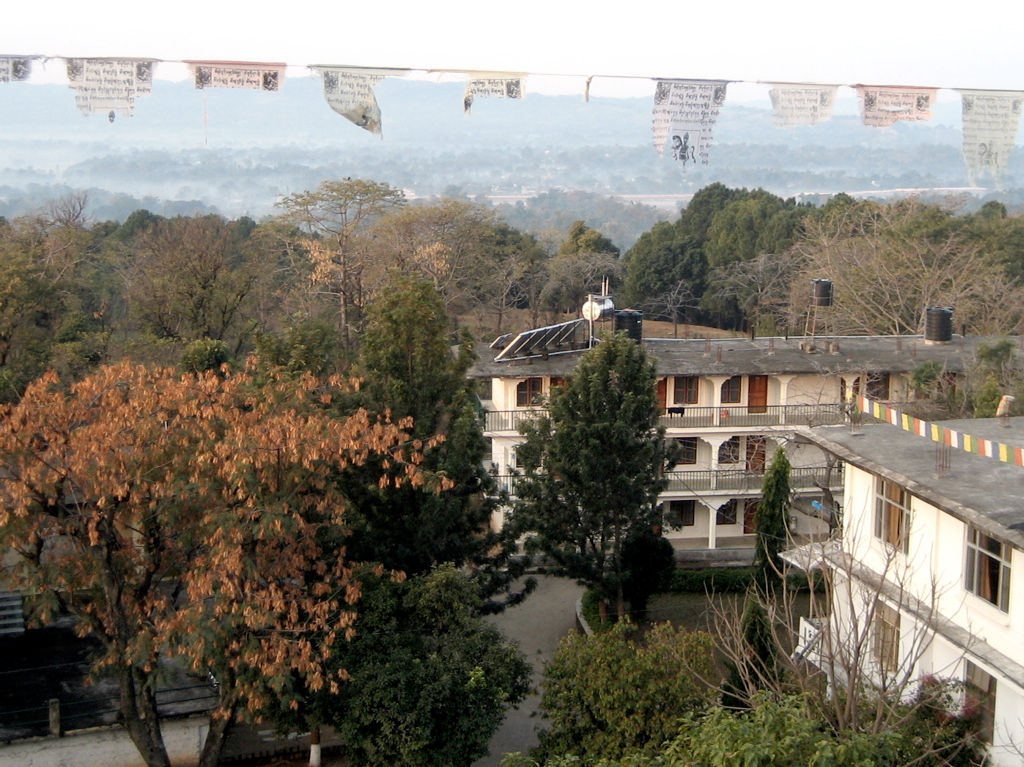
The two monks were rushed to a nearby hospital, where they succumbed to their injuries. Six Tibetans were detained for investigation, and one Tibetan youth has been arrested. One newspaper, Indian Express, claims that the killer or killers are connected with followers of the deity Dorje Shugden. Lobsang Gyatso reportedly received threatening letters that accused him of being part of the Dalai Lama “clique” and of spreading propaganda against the deity Dorje Shugden.
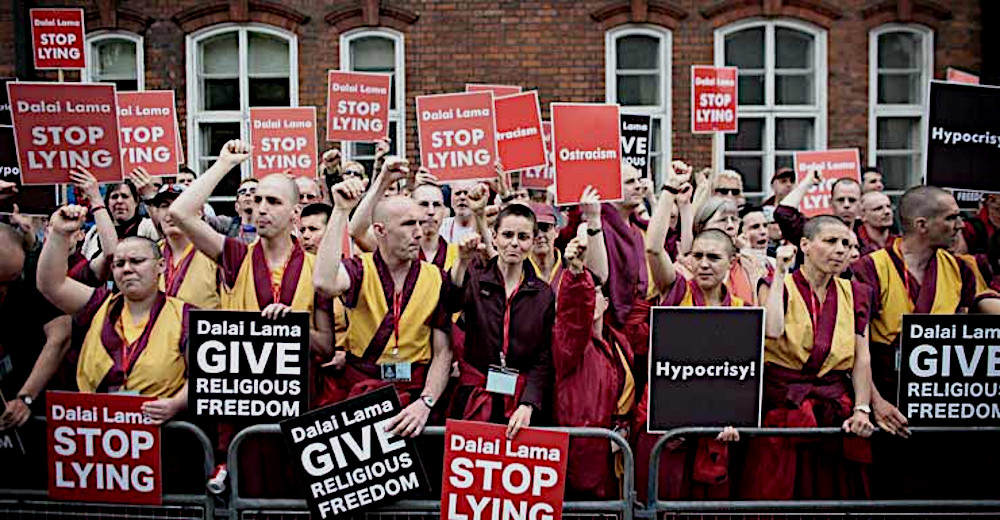
“To stop this evil action, as the representative of the Western Shugden Society, I, personally, will organise demonstrations against the Dalai Lama directly. I requested Kelsang Pema and Kelsang Thubchen to do this job for me, and they have accepted. Please help Pema and Thubchen with whatever they need.”.
Gyatso’s first coup was to overthrow the Tibetan Buddhist Manjushri Institute in England. In 1977, he was invited by Lama Yeshe to be a resident teacher and soon garnered a large following. He then blackmailed the school, threatening to release a 100-page document that falsely alleged criminal drug dealing and more. Within a few years, he managed to take over the institution, ousting the Tibetan religious leadership by pushing out anyone who had the authority to keep his power in check. Tenzin Peljor states that Gyatso even bribed one teacher, paying them to leave. He then became the highest authority at the Institute. Today, Manjushri serves as the central headquarters of the New Kadampa Tradition.
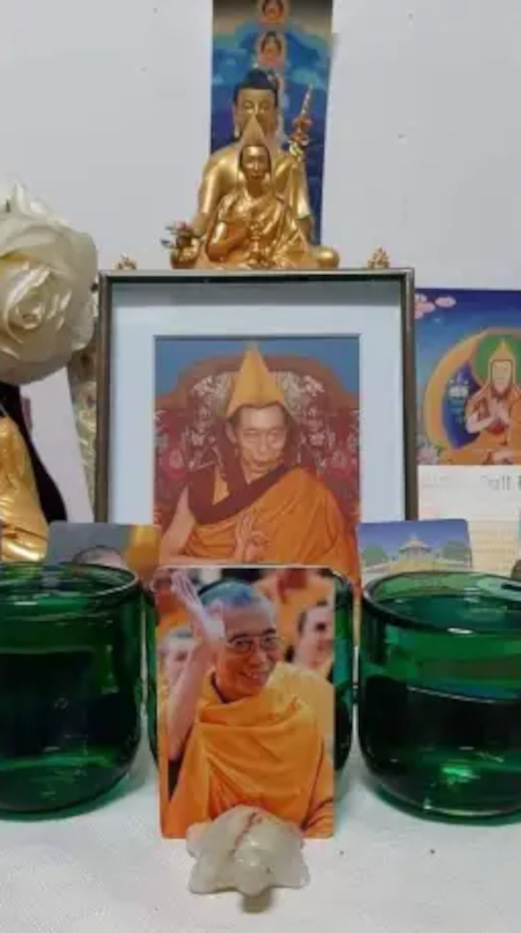
NKT members primarily worship ‘Gesh-la’ and mention him far more frequently than they do Buddha and most NKT shrines are known to have more photos of Kelsang Gyatso than of Buddha. NKT disciples le having photos of KG next to their bed, as their screensavers, everywhere they possibly could. These followers are encouraged to hallucinate him and to have conversations with him in their head.
“The biggest obvious clue that it’s a cult is that they only read and study books by Kelsang Gyatso — you won’t find any other Buddhist books in an NKT centre.”.
The NKT is well known for banning all other Buddhist books from their bookshops. Kelsang Gyatso removed all pictures of the Dalai Lama and books by other authors when he took over the original FPMT centre at Manjushri. This means that members are unable to compare the material in his books with that of others. Senior members of NKT are told to withhold information regarding the whereabouts of Kelsang Gyatso from other members.
“Members do not tend to question the (lack of) information they are given about KG, as this mystery surrounding KG’s whereabouts seems to have elevated him to an even more mysterious and omniscient figure with more magical qualities.”.
Ex-members who are no longer indoctrinated by the magical thinking, emotionally loaded videos and teachings believe KG has been dead a long time or has a degenerative illness. This would mean that the book ‘Mirror of Dharma’ was just a re-write by senior NKT. Many members believe that Kelsang Gyatso functions more like a God, with the ability to intervene in their lives. Followers are encouraged to believe Kelsang Gyatso is an enlightened being and yet they are also encouraged to fear he would be assassinated if he turns up in person. This persecution complex in my opinion reflects paranoia instilled in them by the leadership.
